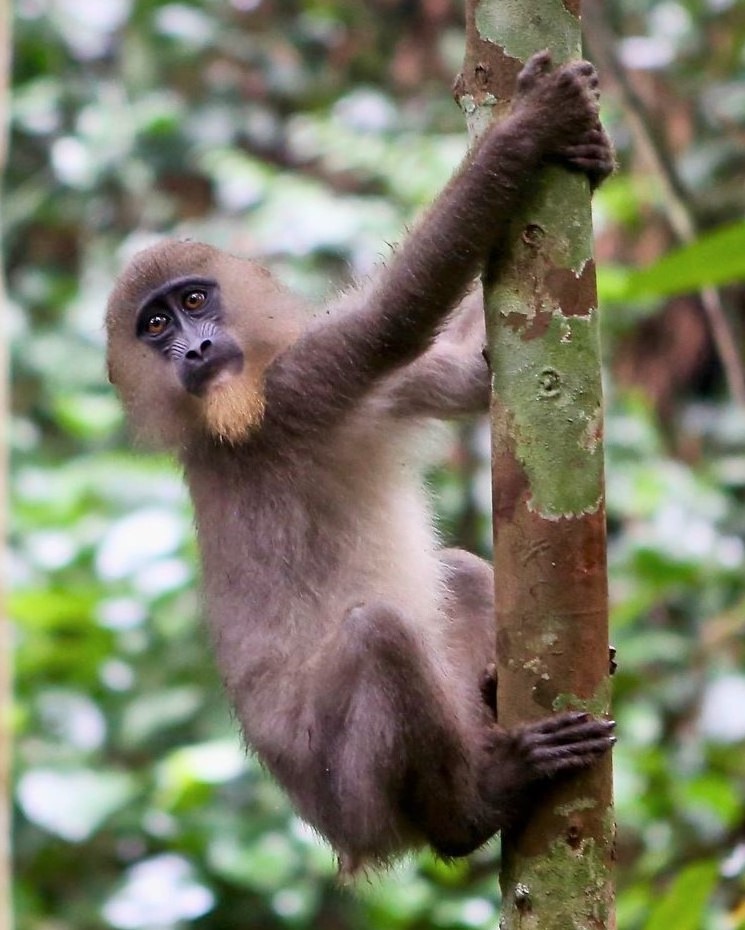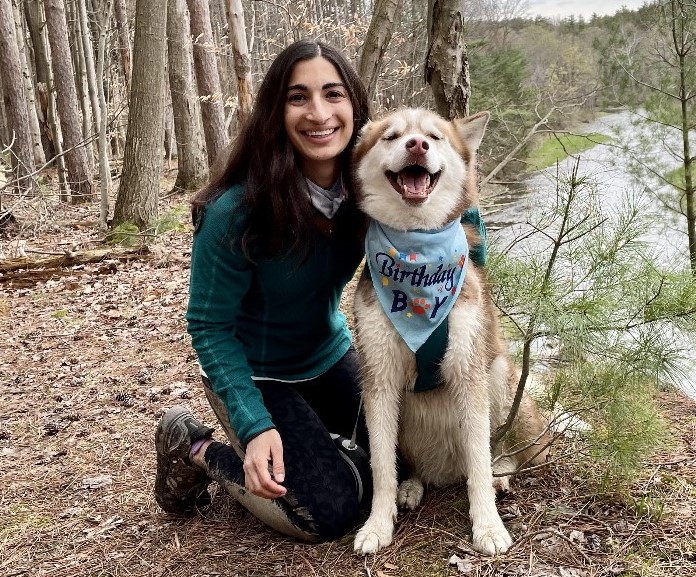Learning the Importance of Veterinary Medicine and Conservation in the Republic of Congo
By Laci Taylor, Cornell University College of Veterinary Medicine DVM Candidate '22
In November 2019, my classmate, Hannah Padda, DVM ’22, and I were selected by Dr. Robin Radcliffe, a Cornell wildlife veterinarian and associate professor of practice in wildlife and conservation medicine, as two of six participants for his 2020 Engaged Cornell team. Dr. Radcliffe’s Engaged Cornell program pairs veterinary and undergraduate students together at established field sites with conservation partners in the Republic of Congo (Congo), Uganda, or Indonesia. The program, which provides funding for the learning experience, challenges students to develop and participate in a conservation medicine-focused project.
My undergraduate partner and I were set to travel to the Jane Goodall Institute (JGI) in Uganda during the summer of 2020, but the COVID-19 pandemic altered these plans. With international and university-mandated travel restrictions in place, I thought I might never make it overseas.
One year later, the chances of international travel still seemed distant, but slowly travel restrictions became more flexible. While traveling to Uganda was not yet possible, the Congo had fewer travel restrictions. Hannah, who had been previously chosen for the Jane Goodall Institute (JGI) Congo site, had been tirelessly petitioning to make her trip a reality for our clinical year. The university was allowing veterinary students to travel internationally, since international research and clinical practice are considered core parts of our veterinary curriculum. However, undergraduate students could not yet travel. Therefore, Hannah and I proposed to Dr. Radcliffe that we would go to the Congo site together. Our travel petitions were approved and we were finally off to complete a veterinary externship at the JGI Congo site during the summer of 2021.
At the JGI Congo site, the long-term goal of the project is to help the conservation of endangered chimpanzees by reintroducing them from a sanctuary setting into the wild, which no other organization has been able to successfully achieve so far. The more immediate objectives of the project are to develop welfare indicators which can be used to predict the best chimpanzees for reintroduction, analyze social structures to develop the most stable group, and determine possible sites for chimpanzee reintroductions.
While in the Congo, we stayed at the Tchimpounga Chimpanzee Rehabilitation Center, which houses chimpanzees, mandrills, several species of monkeys, and other injured wildlife, including birds and galagos. The Tchimpounga Chimpanzee Rehabilitation Center consists of the main centralized sanctuary and three islands about a one-hour boat ride away: Ngombe, Tchindzoulou, and Tchibebe Islands.
At the center, we performed daily rounds on all the animals housed there, checking their overall health status and administering any necessary treatments, such as oral anti-parasitic medications and application of medicated cream to wounds. I always greeted my favorite chimpanzee, Benjamin; Hannah would always say hi to one of her favorite chimpanzees, Falero, but then run away quickly because he liked to throw rocks at us! We always made sure to have a long check-in with two of the more curious chimpanzees, Amazon and Mbebo.
The center’s animal care staff works with the chimpanzees to teach them to present wounds for monitoring and treatment. During checks, we also collected fresh fecal and other types of samples that allowed us to sharpen our laboratory diagnostics skills by performing and analyzing direct fecal smears, fecal flotation, skin scrapes, blood smears, and developing treatment protocols for any abnormal findings. We also assisted in non-routine procedures, such as an orthopedic examination on a juvenile chimpanzee who became acutely non-weight bearing on his left hindlimb, and a head laceration repair on a juvenile mandrill.
We also spent time at the center’s three island locations to conduct the annual chimpanzee health checks, where we monitored anesthesia, collected blood sample, obtained x-rays and undertook ultrasound exams. Each island contains a different group of chimpanzees. Due to the complex social structure of these groups, the animal care staff constantly monitors them for any signs of discord. When conflicts arise, they work with the veterinarians to develop resolution plans, which often involve the relocation of chimpanzees from one group to another or back to the main sanctuary. When a chimpanzee is relocated, the veterinary staff takes that opportunity to perform a full health check. We participated in several of these relocations and were fortunate to take part in the health checks and observations of chimpanzees integrating into new social groups. We learned a tremendous amount about chimpanzee behavior, a vital component of understanding how to effectively save their species.
On the days we traveled outside of the main sanctuary, we focused on other aspects of conservation medicine. Some days, we hiked through jungles to retrieve camera trap data and observed the footage to determine what animal species, animal activities, or human activities were present in certain areas. This data is used to help assess the suitability of sites for chimpanzee release through geospatial analysis.
In Conkouati-Douli National Park, we were able to visit a group of mandrills previously released by JGI. We observed and collected behavioral data to determine if additional mandrills could be added and accepted into their cohort. We are hopeful that another group of mandrills from Tchimpounga can join these mandrills in the near future.
To our surprise, we also worked directly with cats and dogs. One of the resident sanctuary cats had pyometra, a life-threatening uterine infection, and we assisted in her daily care and monitoring after her ovariohysterectomy by administering fluids, antibiotics, and pain medications. We also had the opportunity to work with the JGI’s K9 unit that was being trained to search for illegal wildlife products. We were able to observe the training, help manage and treat dermatologic issues and a corneal ulcer, perform annual health checks, and administer vaccinations.
During our time at the Tchimpounga Sanctuary, we learned a tremendous amount about the intricacies of saving a wildlife species when there is minimal natural habitat left nearby. We discovered ways to directly and indirectly help chimpanzees and learned about the challenges involved in creating a protected space for them to thrive. We went into this experience with the expectation of practicing clinical veterinary medicine solely on chimpanzees, and left with improved clinical skills involving a diversity of species, and a greater understanding of the importance of transdisciplinary work in veterinary medicine and conservation.
Laci Taylor, class of 2022, is a DVM student at the Cornell University College of Veterinary Medicine. She is interested in wildlife and aquatic medicine and hopes to make a global impact as a wildlife veterinarian. Laci hopes to promote biodiversity through rehabilitation and conservation – fields that serve as pathways for understanding many pertinent issues today from the transmission of zoonotic diseases which affect public health, to restoring endangered species.
Hannah Padda, class of 2022, is a DVM student at the Cornell University College of Veterinary Medicine. She is interested in One Health, epidemiology, and conservation medicine and hopes to make a global impact as a wildlife veterinary epidemiologist.



